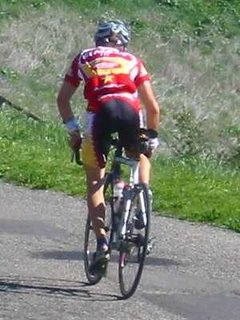This idea is half-baked at best, but my gut tells me it's doable, although perhaps not particularly profitable. I'd guess 10-20 acres could support a 5-10 table restaurant. That's asking the land to be a lot more productive than what we see currently in our industrial-farming paradigm, where it takes about 1.5+ acres to feed each man, woman, and child in the US. That is a real problem, by the way, because it's almost precisely the amount of arable land available per capita. As the graph below shows, the trends are troubling...

...because our population is growing and our arable land is disappearing (to erosion, depletion, and urban sprawl). What happens when we cross over? Do we become a net importer of food, dependent on foreign countries for our nutrition? Even now, with most of our food grown in the US, the average meal travels 1,500 miles to reach your plate. That's just nuts. And don't even get me started on the environmental damage done by the industrial farming mega businesses. Here's an industrial dairy's manure lagoon to whet your appetite:

Yum... I bet that's some tasty groundwater coming up from those wells in nearby towns. The really crazy thing is that the manure should be a valuable asset to the local agriculture, if it just weren't so concentrated in the feed lots and not full of pharmaceuticals and hormones. For a better way, see Polyface Farms, the place made famous in the book "The Omnivore's Dilemma".
What can you do? Lots of things. Buy local, eat lower on the food chain, grow some of your own fruits and vegetables. For those blog readers here in Santa Barbara County, consider signing the online petition to urge our leaders to preserve Goleta farmland.
...
But anyway... all that stuff above is not what I really intended to write about. All I really wanted to post was the two pictures below.
First picture shows a portion of what I harvested from my backyard on Saturday. The potatoes were mostly a failure because all I got from about 40 sq. feet was a single brown bag full. Most of the plants died from pests or disease. I think next time I'll try to grow them in containers. But everything else in the picture has been wildly successful. We have enough carrots and garlic to last for a year. In fact, I've been giving away most of the garlic. The onions have done well as have the squash. Rosemary is always around.

...and so we combined all that and tossed with some olive oil and roasted it for about an hour. Paired with herb roasted chicken and a mellow merlot, and this was dinner in our makeshift kitchen on our cheapo Corelle plates:


